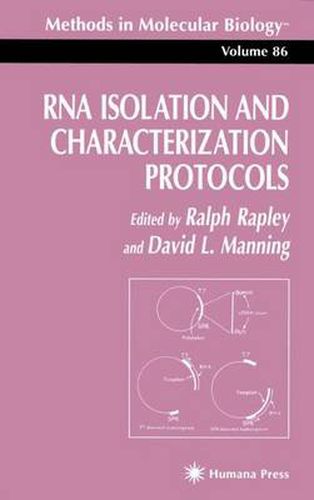Readings Newsletter
Become a Readings Member to make your shopping experience even easier.
Sign in or sign up for free!






This title is printed to order. This book may have been self-published. If so, we cannot guarantee the quality of the content. In the main most books will have gone through the editing process however some may not. We therefore suggest that you be aware of this before ordering this book. If in doubt check either the author or publisher’s details as we are unable to accept any returns unless they are faulty. Please contact us if you have any questions.
Ribonucleic acids are central to cellular and molecular processes and perform vital functions in both structural and functional roles. RNA molecules form the bridge between the stable genetic information contained within DNA and enzymes and proteins that carry out much of the metabolism within the cell. Many of the sites of protein synthesis, the ribosomes within the cell, are composed of these ribonucleic acids as are the tRNA molecules that deliver the amino acid building blocks to the ribosomes. Of all the RNA species, the nucleic acid intermediate, messenger RNA, is a desirable source of material to biologists, since this reflects much of, what ultimately, is translated into enzymes and proteins. In order to determine the qualitative and quantitative changes in mRNA expression, a vast number of molecular biological techniques have been developed. Key molecular methods that provide the means to initially isolate and analyze RNA molecules are the focus of this volume. In putting together this collection of protocols, we have tried to provide techniques that are most applicable and widely used. In particular, there are a number of iso- tion techniques included that have been developed, modified, or adapted to enable extraction from a variety of cell types, organisms, or subcellular organelles. Successful isolation of intact RNA is an essential starting point for any sub- quent analysis. This is why we have aimed to make this section comprehensive. The analysis of RNA is the focus of the following chapters.
$9.00 standard shipping within Australia
FREE standard shipping within Australia for orders over $100.00
Express & International shipping calculated at checkout
This title is printed to order. This book may have been self-published. If so, we cannot guarantee the quality of the content. In the main most books will have gone through the editing process however some may not. We therefore suggest that you be aware of this before ordering this book. If in doubt check either the author or publisher’s details as we are unable to accept any returns unless they are faulty. Please contact us if you have any questions.
Ribonucleic acids are central to cellular and molecular processes and perform vital functions in both structural and functional roles. RNA molecules form the bridge between the stable genetic information contained within DNA and enzymes and proteins that carry out much of the metabolism within the cell. Many of the sites of protein synthesis, the ribosomes within the cell, are composed of these ribonucleic acids as are the tRNA molecules that deliver the amino acid building blocks to the ribosomes. Of all the RNA species, the nucleic acid intermediate, messenger RNA, is a desirable source of material to biologists, since this reflects much of, what ultimately, is translated into enzymes and proteins. In order to determine the qualitative and quantitative changes in mRNA expression, a vast number of molecular biological techniques have been developed. Key molecular methods that provide the means to initially isolate and analyze RNA molecules are the focus of this volume. In putting together this collection of protocols, we have tried to provide techniques that are most applicable and widely used. In particular, there are a number of iso- tion techniques included that have been developed, modified, or adapted to enable extraction from a variety of cell types, organisms, or subcellular organelles. Successful isolation of intact RNA is an essential starting point for any sub- quent analysis. This is why we have aimed to make this section comprehensive. The analysis of RNA is the focus of the following chapters.